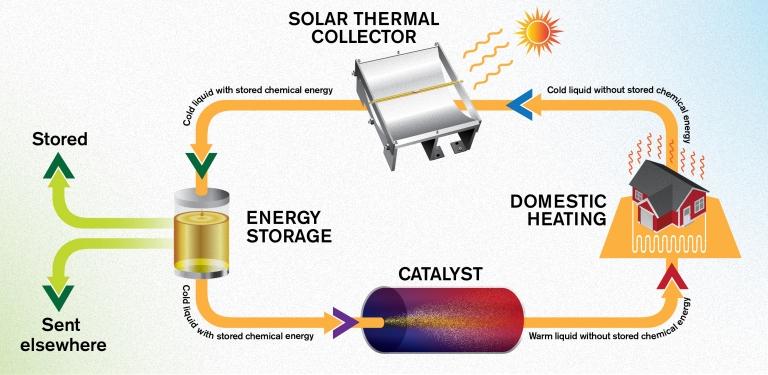TECH

Energy Storage: Summer Heat Is Stored for Winter
Heat Battery
A few years ago, a group at Chalmers University of Technology in Sweden has been working on a substance capable of storing solar energy for years.The substance is made up of a molecule of carbon, hydrogen and nitrogen, which has the unique property of being transformed into an energy rich isomer - an isomer is a molecule that consists of the same atoms, but united in a different way.This material can be isomerized using solar energy and then stored in tanks, to be used when energy is needed - at night or in winter, for example. Its liquid form is ideal for use in a solar energy system that researchers called MOST (Molecular Solar Thermal Energy Storage).The team has now announced major breakthroughs in the development of MOST, which is essentially a version of the technology known as battery flow, in this case aimed at storing heat - there are others geared towards storing the wind."The energy in this isomer can now be stored for up to 18. And when we are going to extract the energy and use it, we get an increase that is far greater than we dared expect," said Professor Kasper Moth Poulsen.
Store heat
One of the improvements involved the development of a catalyst to control the release of stored energy. The catalyst acts as a filter through which the liquid flows, creating a reaction that heats up at 63 degrees Celsius - if the liquid is stored at a temperature of 20Â ° C, when pumped through the filter it leaves the other side at 83Â ° C. The heat can then be harnessed to generate energy, while the molecule returns to its original form and can be reused in the system.In addition, the system previously relied on the addition of toluene, a flammable chemical compound. Now researchers have discovered a way to remove toluene and use only the energy storage molecule.Together, these advances mean that the MOST power system now works in a circular fashion, without relying on the addition of external components. First, the liquid captures energy from sunlight (heat) in a solar collector on the roof of a building. It is then stored at room temperature with minimal energy losses.When the energy is required, the liquid can be sucked in by the catalyst, with the heat being then used, for example, in thermovoltaic systems, for electricity generation, or in heating systems. The liquid can then be sent back to the roof to collect more energy, without emissions and without damaging the molecule.It is now necessary to combine this entire process into an integrated system ready for use."We have just made the system work, and now we need to make sure everything is ideally designed," Poulsen said.
Bibliography:Macroscopic heat release in a molecular solar thermal energy storage system
Zhihang Wang, Anna Roffeya, Raul Losantos, Anders Lennartsona, Martyn Jevrica, Anne U. Petersen, Maria Quant, Ambra Dreos, Xin Wen, Diego Sampedro, Karl Börjesson, Kasper Moth-PoulsenEnergy & Environmental Science

No comments:
Post a Comment